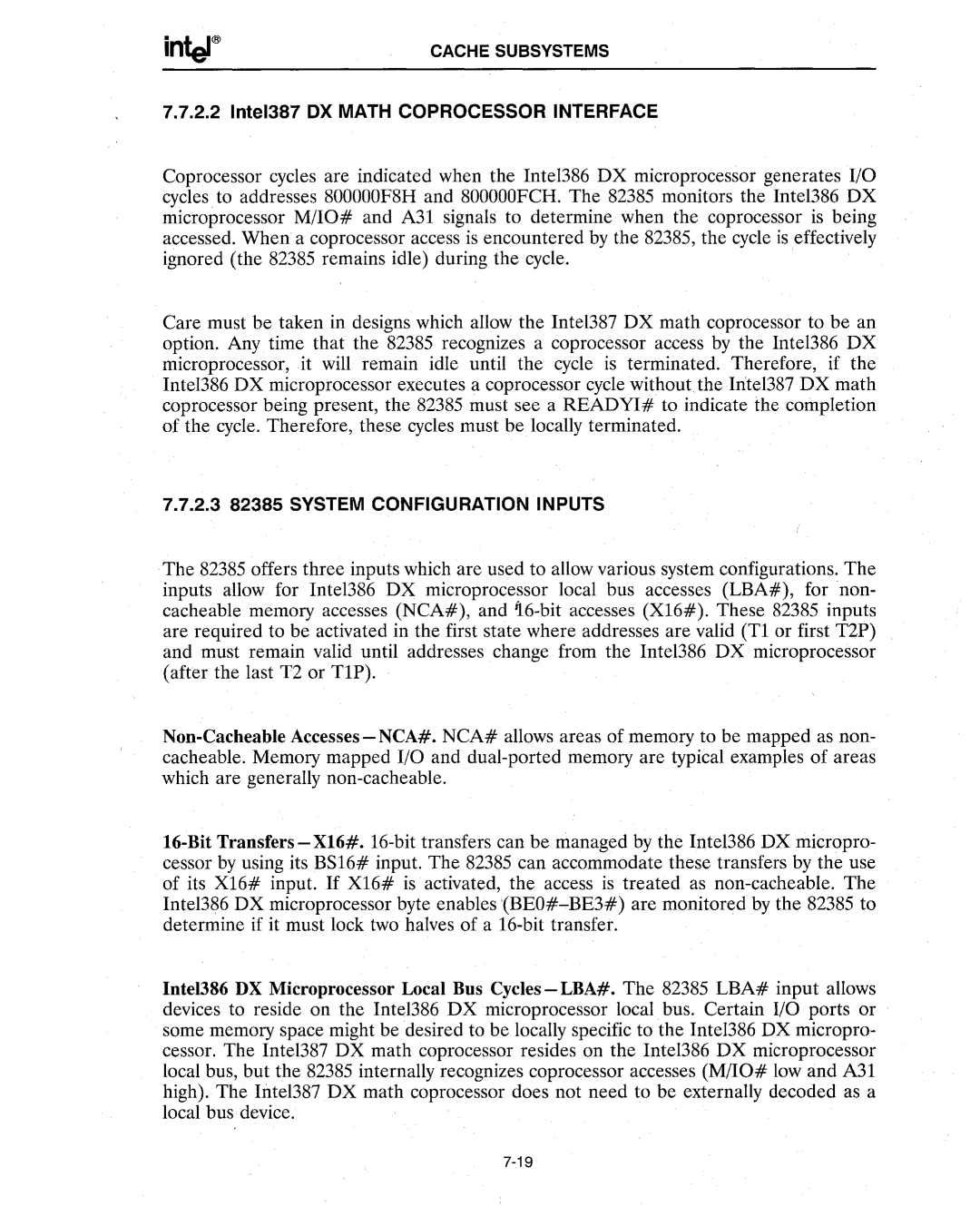CACHE SUBSYSTEMS
7.7.2.2 Intel387 OX MATH COPROCESSOR INTERFACE
Coprocessor cycles are indicated when the Intel386 DX microprocessor generates I/O cycles to addresses 800000F8H and 800000FCH. The 82385 monitors the Intel386 DX microprocessor M/IO# and A31 signals to determine when the coprocessor is being accessed. When a coprocessor access is encountered by the 82385, the cycle is effectively ignored (the 82385 remains idle) during the cycle.
Care must be taken in designs which allow the Intel387 DX math coprocessor to be an option. Any time that the 82385 recognizes a coprocessor access by the Inte1386 DX microprocessor, it will remain idle until the cycle is terminated. Therefore, if the Intel386 DX microprocessor executes a coprocessor cycle without the Iritel387 DX math coprocessor being present, the 82385 must see a READYI# to indicate the completion of the cycle. Therefore, these cycles must be locally terminated.
7.7.2.3 82385 SYSTEM CONFIGURATION INPUTS
The 82385 offers three inputs which are used to allow various system configurations. The inputs allow for Inte1386 DX microprocessor local bus accesses (LBA#), for non- cacheable memory accesses (NCA#), and %-bit accesses (X16#). These 82385 inputs are required to be activated in the first state where addresses are valid (Tl or first T2P) and must remain valid until addresses change from the Inte1386 DX microprocessor (after the last T2 or TIP).
Non-Cacheable Accesses-NCA#. NCA# allows areas of memory to be mapped as non- cacheable. Memory mapped I/O and dual-ported memory are typical examples of areas which are generally non-cacheable.
16-Bit Transfers-X16#. 16-bit transfers can be managed by the Inte1386 DX micropro- cessor by using its BS16# input. The 82385 can accommodate these transfers by the use of its X16# input. If X16# is activated, the access is treated as non-cacheable. The Intel386 DX microprocessor byte enables '(BEO#-BE3#) are monitored by the 82385 to determine if it must lock two halves of a 16-bit transfer.
Intel386 DX Microprocessor Local Bus Cycles-LBA#. The 82385 LBA# input allows devices to reside on the Intel386 DX microprocessor local bus. Certain I/O ports or some memory space might be desired to be locally specific to the Inte1386 DX micropro- cessor. The Intel387 DX math coprocessor resides on the Inte1386 DX microprocessor local bus, but the 82385 internally recognizes coprocessor accesses (M/IO# low and A31 high). The Intel387 DX math coprocessor does not need to be externally decoded as a local bus device.
7-19

